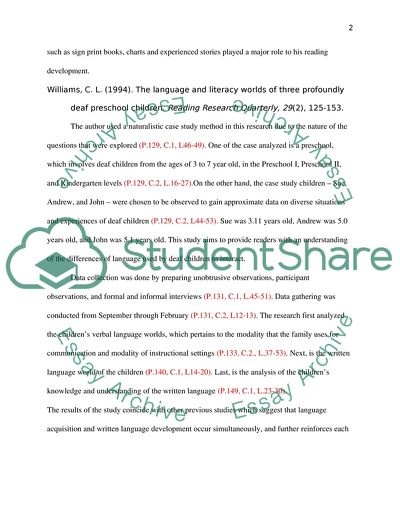Cite this document
(Analysis of Articles about a Deafchild Learns to Read Annotated Bibliography Example | Topics and Well Written Essays - 1250 words, n.d.)
Analysis of Articles about a Deafchild Learns to Read Annotated Bibliography Example | Topics and Well Written Essays - 1250 words. https://studentshare.org/education/1842477-5-annotated-bibliographies
Analysis of Articles about a Deafchild Learns to Read Annotated Bibliography Example | Topics and Well Written Essays - 1250 words. https://studentshare.org/education/1842477-5-annotated-bibliographies
(Analysis of Articles about a Deafchild Learns to Read Annotated Bibliography Example | Topics and Well Written Essays - 1250 Words)
Analysis of Articles about a Deafchild Learns to Read Annotated Bibliography Example | Topics and Well Written Essays - 1250 Words. https://studentshare.org/education/1842477-5-annotated-bibliographies.
Analysis of Articles about a Deafchild Learns to Read Annotated Bibliography Example | Topics and Well Written Essays - 1250 Words. https://studentshare.org/education/1842477-5-annotated-bibliographies.
“Analysis of Articles about a Deafchild Learns to Read Annotated Bibliography Example | Topics and Well Written Essays - 1250 Words”. https://studentshare.org/education/1842477-5-annotated-bibliographies.


